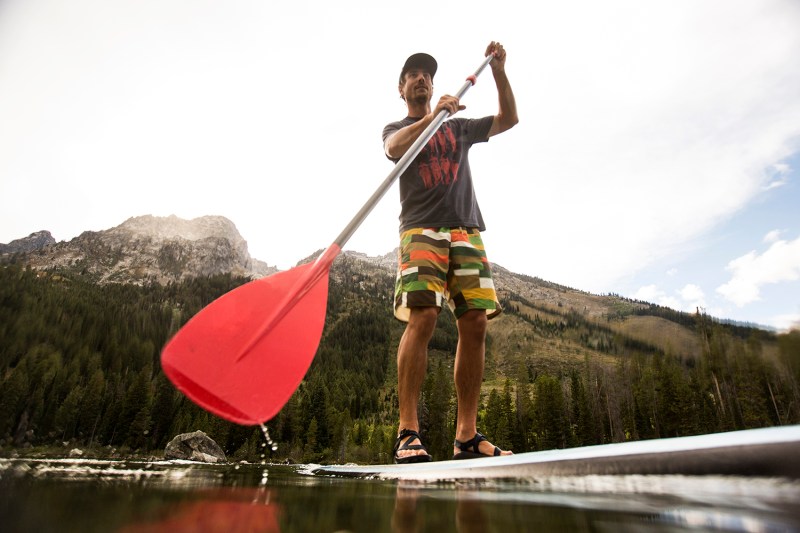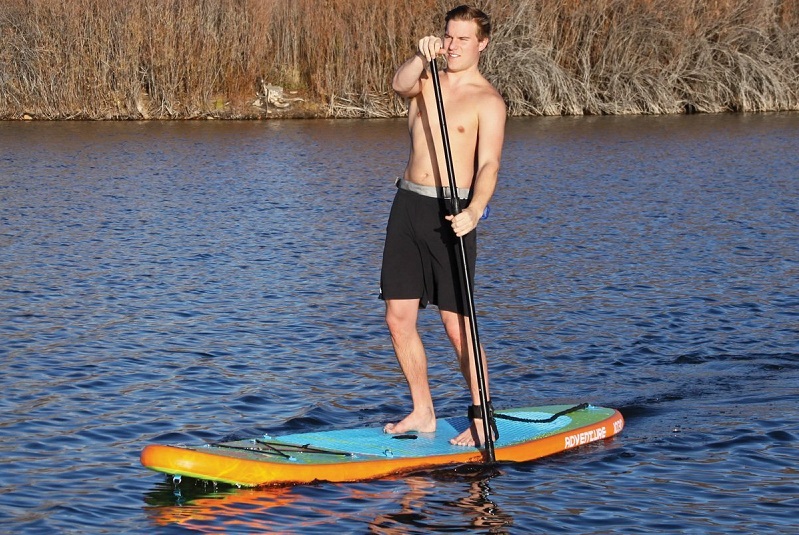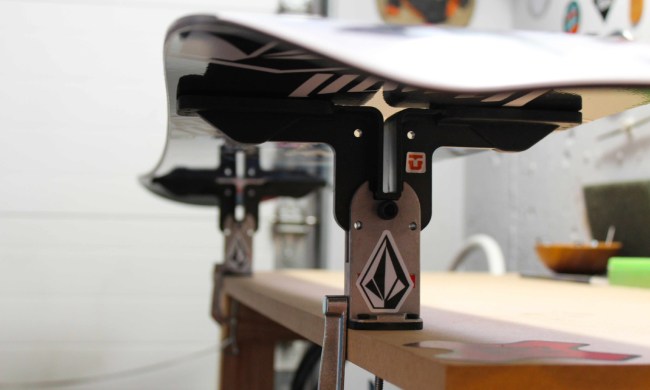Paddleboarding is fast becoming the number one watersport in the US and around the world. Paddleboards and paddleboarders now come in all shapes and sizes. There are boards for overnight journeys for you to find your own private camping spot. Other paddleboarders find the calm and relaxing zen that comes from paddleboard yoga and there are even paddleboards designed to tackle the raging rapids of white water rivers.
There are loads of places to rent a board and give paddleboarding a go. But if you’re serious about getting into it, you’ll save time and money by getting your own gear. First, you’ll need the right paddleboard and paddle, as well as the best paddleboarding equipment to go with it. The right gear is useless in the wrong hands though. Fortunately for you, we’re here with our guide to stand up paddleboarding so that you can take to the water with confidence and become part of the paddleboard boom.

Pick the Right Board
You’re not going to get far without a paddleboard and a paddle. Beginner paddleboarders usually start out with an all-around paddleboard. These are wide and stable, with a slightly upturned nose to help you paddle through waves. Many paddleboarders will never need to change from an all-around board, which is great on calm water, ocean bays, and gentle rivers. Paddleboarders with long journeys, big surf, gnarly rivers, or who plan to dedicate their time on the water solely to yoga will require a more specialized board, but starting with an all-around board gives you the chance to try a bit of everything.
Most paddleboards are between nine and eleven feet long, and between thirty-two and thirty-four inches wide. Taller and heavier paddleboarders may find they need a larger board than this for better stability. Paddleboards all come with a weight capacity, but remember to include any equipment and pets you plan to take on the water with you when you work out your weight. A lot of board packages now come with an adjustable paddle, too. Your paddle should be eight to ten inches taller than you are for optimum paddling.
Dress To Get Wet
We can’t tell you exactly what you need to wear on the water because it varies between places, seasons, and sometimes hour-to-hour. Whether you head for the water in a full wetsuit or just your swim trunks, it’s important that you’re always ready to get wet — just in case. This means stowing your important equipment in a waterproof dry bag and securing it safely to your board, too. When you’re on the water you will be exposed to the full force of the sun, so we recommend wearing sunscreen and a swim shirt to protect you from potentially harmful rays.
Paddleboards are considered by the USCG to be vessels, just like a boat. This means that if you’re heading out onto water that is not designated for swimming or bathing, you must have a personal floatation device with you at all times. Paddleboarders often prefer manually inflatable PFDs, which they can deploy if necessary, relying the rest of the time on their board. Attaching the board to yourself with a leash prevents the board from drifting off and you being left stranded in the water.

Get a Successful Launch
Once you’ve inflated your board, you’ve got a ten-foot-long inflatable that you now have to carry to the water. Most boards have a handle in the center. By tucking the board under your arm and carrying it like a briefcase, you can reach the water without being blown around the beach. Once you reach the water’s edge, find a soft area to place your board down and attach your fin and any equipment you’re taking out securely. Secure your leash and walk your board into the water until you’re about calf-deep and then climb on board.
Starting on your knees is more stable than standing and can be a great way to get a feel for paddleboarding. Kneeling is also useful if conditions get rough, or in shallow areas, to reduce the chance of falling off your board. When you’re ready to stand, put your paddle across the board in front of you and place both hands — palms down — on the paddle. Plant the balls of your feet onto the board and stand up slowly with your feet in a wide stance. Don’t forget to pick your paddle up, too. If you need to move around your board, use your paddle as a crutch for extra stability.
Keep Your Head Up
Standing up can feel shaky at first, but you get used to it quickly. Paddleboarding requires you to use almost every muscle group to balance and to paddle. You should keep your feet in a wide stance — a little more than shoulder-width apart — and your knees slightly bent. This helps to maintain balance but also keeps you ready for any lumps and bumps along the way. Try to relax and keep looking ahead of you at all times. You’re more likely to fall in if you’re staring down at your paddleboard and you also won’t know where you’re going.
Most paddleboards work best when you are standing around the midpoint. Moving backward on your board can make it easier to turn in tighter space, but this does depend on board design. Once you’re confident standing on your board, try moving around and see what difference it makes to how it paddles. This will also help to increase your balance and boost your confidence but be prepared that moving too far forwards or backward will probably end up with you in the water. Don’t worry, that’s all part of paddleboarding.

Prepare to Fall and Learn to Climb Back Onboard
You should always be dressed to get wet because you never know when you might accidentally fall in. When you head out paddleboarding for the first time, it can be a good idea to practice falling in and rescuing yourself. That way, when you really need it, you already know exactly how you’re going to get back on your paddleboard. Remember to keep your important equipment secured to your board and in a waterproof dry bag.
If you fall in, try to keep hold of your paddle. Swim back to your board, or pull it towards you using your leash. If your board has turned over, climb onto the base and reach for the far side so you can pull it all the way over towards you. Once your paddleboard is up the right way, place your paddle across it as you did to stand up and reach for a handle on the far side of the board. Climbing back on your board is like getting out of a swimming pool. Kick your leg up and climb your body on board, keeping the board as flat as possible.
Reap the Rewards
Paddleboarding is a great full-body workout and most people find that after the first time, they’re hooked. These boards roll up and hardly take up any room at all while giving you easy access to explore lakes, rivers, and the ocean. Whether you pack them into the RV for your next holiday or become a daily sunrise paddleboard enthusiast, there’s no doubt that there are huge benefits to paddleboarding. Once you’ve mastered the basics, you can get out there and enjoy it in a way that’s right for you.



